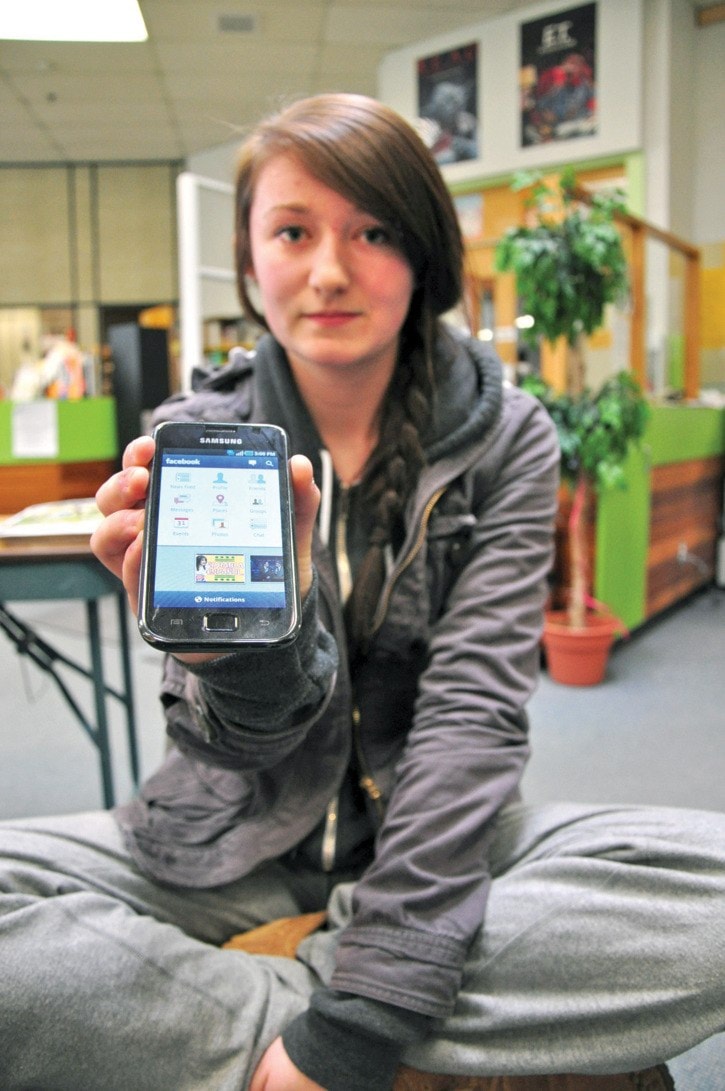Students in pink shirts Wednesday are reenforcing the message that bullying isn’t OK in the schoolyard, or its modern-day equivalent, the Internet.
Sooke School District officials and students say online bullying is not as vitriolic as it was just a few years ago. But with easy access to texting and social networking websites, harassment remains a problem.
“A lot of teen girls on Facebook make fun of each other. They make fun of your hair style, your clothes, who you’re hang out with,” says Kenzie Leslie, a 15-year-old Grade 10 student at Belmont secondary.
“Some people take it really personally. A lot of kids don’t understand that people get hurt by it. I see it as bullying and being mean, but it’s not as bad as it used to be. I don’t see a lot of physical threats.”
The school district has been grappling with the implications of Internet bullying and Internet safety for about five years, and days such as the anti-bullying Pink Shirt Day on Feb. 23 helps drive home the message.
Even if harassment takes place online and off school property, if it’s between students, the district will take an active role to intervene, said Jim Cambridge, SD 62 superintendent.
Instead of outright banning social networking sites or smartphones, Cambridge says teachers and staff focus on teaching kids how to use information technology respectfully and responsibility.
“The words that go out on the Internet can last forever,” Cambridge says. “Posting insults on Facebook or Twitter about someone is so easy, they last so long and are distributed so far.”
Maureen Hann, technology curriculum co-ordinator and Scott Rothermel, SD 62 RCMP liaison, have developed a program for students to highlight Internet bullying and how to safely navigate the online world.
Rothermel said after three years of work, students are now becoming more comfortable reporting cases of Internet-based bullying, as opposed to saying nothing or escalating the conflict.
“Bullying isn’t more rampant, but certainly more students are coming forward,” Rothermel says. “Education is huge. It’s an entirely new form of communication and with that comes digital citizenship and how to communicate respectfully.”
Often, students caught bullying are highly unlikely to harass fellow students face to face, he says, and often act out of character. “Most say they weren’t thinking and they got angry,” Rothermel says.
“We try to teach respectful communication and to stop and think before firing off that harmful e-mail. There are no checks unless you self-check.”
Part and parcel with avoiding bullying situations is understanding how to configure security settings on sites such as Facebook, Hann said, and not allowing strangers access to one’s profile.
If a teen falls prey to being bullied through the Internet, Hann said it’s critical to save copies of the text, e-mail or posting that could be used as evidence.
“Depending on how things escalate, it’s important to have copies so police can trace it back,” she says. “It’s important to keep the evidence and to tell someone, to seek help before it gets really bad.”
She said although tweens and teens might not like it, she encourages parents to check their children’s security settings on social networking sites often.
“We encourage students to create a positive web image,” she said. “A lot of colleges and employers will do web searches on people, to see what kind of questionable photos are out there.
“We try to get across what is out there is likely to be permanent. We want kids to think about the consequences of their actions.”
editor@goldstreamgazette.com
